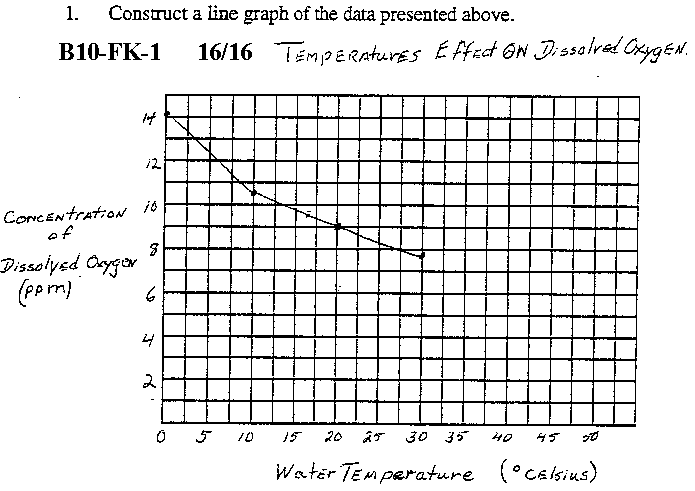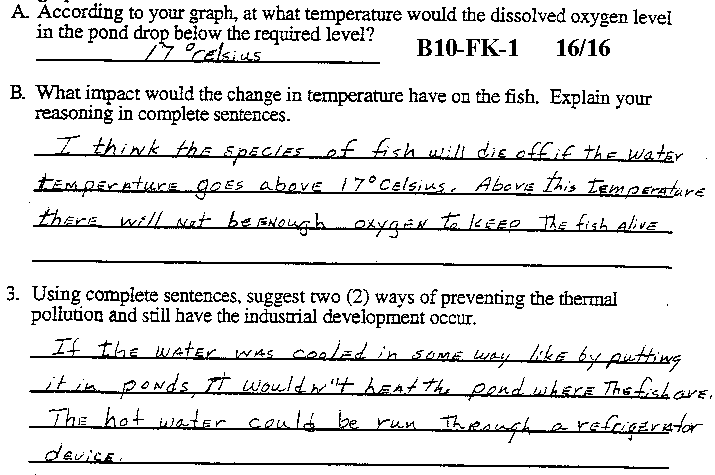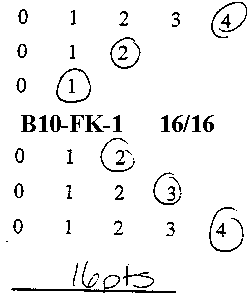 |
 |
|
|
|
|
Student #1Task: At this station, you will analyze data to determine the effect of thermal pollution on a certain species of fish.Background Water temperature is a limiting factor in an aquatic habitat, affecting activities such as respiration and reproduction. Directions Examine the data in the table below. It shows the concentration of dissolved oxygen available in water at different temperatures. The oxygen available to fish is in units marked ppm or "parts per million." A higher ppm reading indicates a greater concentration of oxygen.


ScoringCircle the student's score for each question. Add the points
for each question and write the total score at the bottom of the
scoring form.
Next Student Work
|
